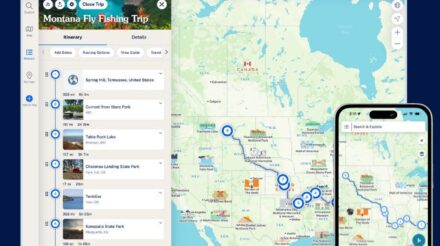Although the RV furnace uses one of the simplest technology systems in a rig, it can be a hassle to repair. Luckily, there are a few things owners can do to stay on top of furnace maintenance and ensure that your RV stays at a comfortable temperature, especially when camping in colder weather.
Key Takeaways
- A dirty sail switch can stop ignition within 30 seconds, so monthly vacuuming near the return vent is crucial.
- Blowing cold air at the start or end of a heating cycle is normal, lasting up to five minutes.
- If propane fails to ignite after three tries, the furnace locks out until reset at the thermostat.
RV Furnace Troubleshooting and Maintenance Tips
There are a few different types of heaters used inside RVs, like hydronic heat (mini boiler system) and catalytic heaters (or space heaters), but most rigs typically have a forced air furnace. This propane-fueled system also uses 12-volt DC from the coach battery to operate the thermostat and the blower fans.
The appliance itself is typically not visible. It’s usually located behind a wall with the only visible elements being the return air vent (located in the interior) and the intake/exhaust vent on the exterior of the RV.
RV furnace issues range from the pilot not lighting to blowing out cold air. Let’s take a look at a few common problems and troubleshooting solutions for your furnace.
RV Furnace Shuts Off Quickly: Common Causes and Fixes
The return air compartment doesn’t have a filter and is often located under the refrigerator or someplace low to the floor—this allows dust, food, and debris to get into that area. This can cause an important component called the “sail switch” to get dirty, preventing it from sending a signal to the furnace system that conditions are safe to ignite the propane.
This is a problem that requires an RV technician to remedy. You can help prevent this issue by vacuuming the return area once per month (or more during cold weather season).
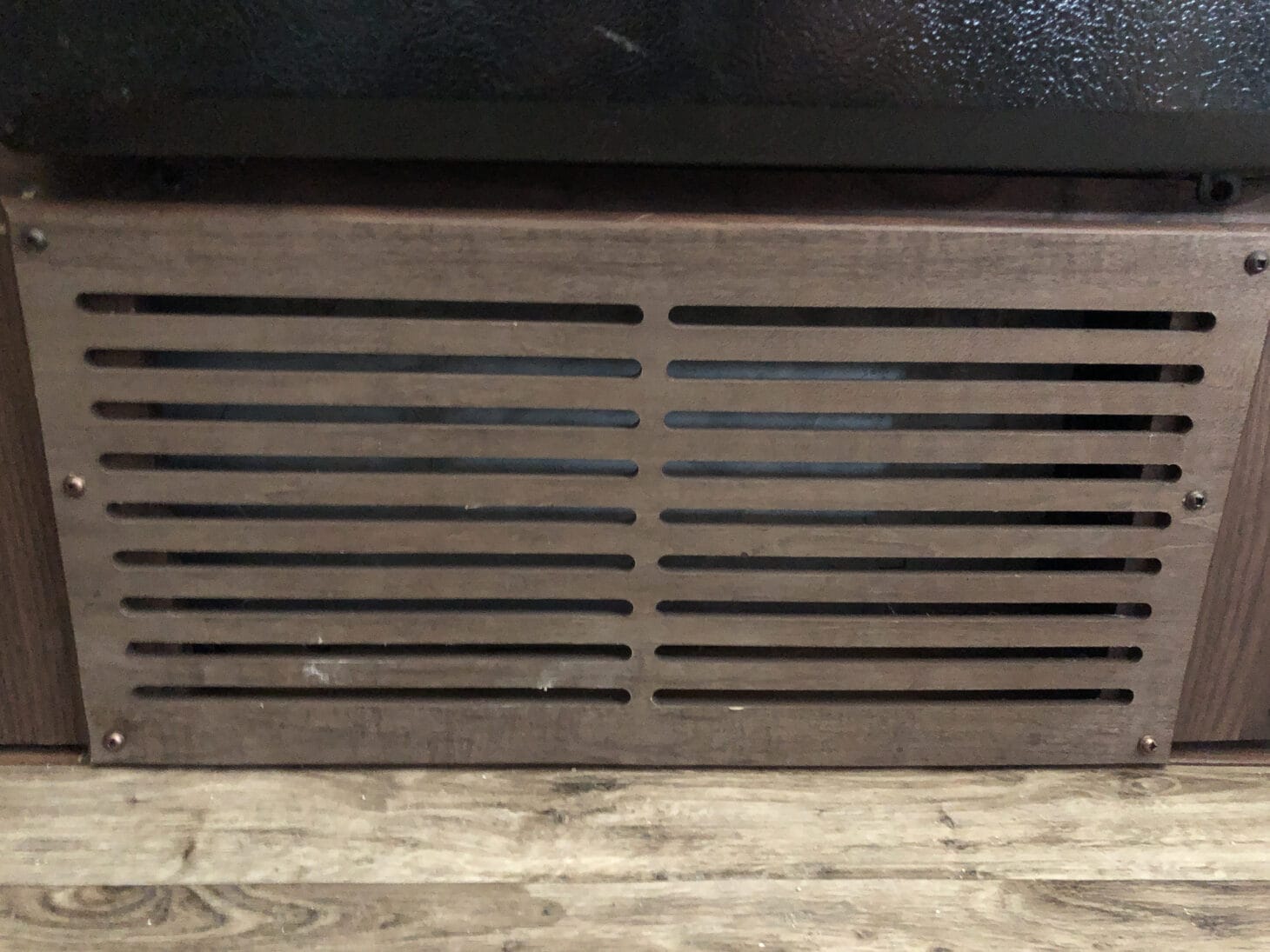
RV Furnace Not Turning On: Thermostat and Power Issues
Believe it or not, this can be as simple as adjusting the setting on the thermostat. Make sure that it’s set to “Heat” or “Furnace.” Next—remember that the thermostat operates from the 12-volt DC coach battery—ensure that your battery is fully charged and then check the 12-volt fuse panel to make sure the furnace fuse isn’t blown.
There could be a few other issues that cause the furnace to not kick on that need to be addressed by an RV technician, including loose wiring connections and circuit board problems.
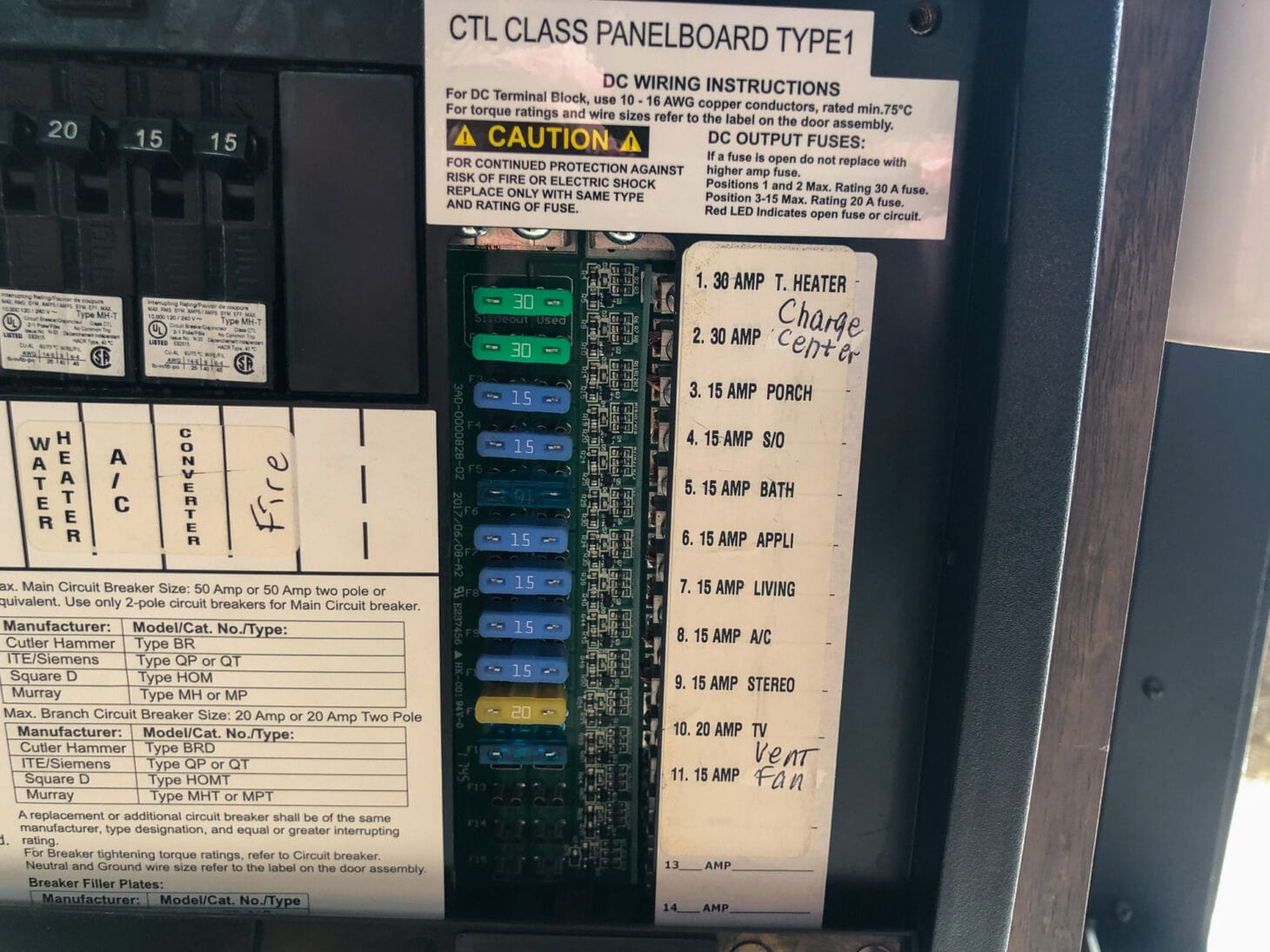
Why Your RV Furnace Blows Cold Air Before Heating
Because the furnace utilizes propane as its fuel source, there are several safety features that are enacted before the system fires up. A blower fan must reach a minimum number of cubic feet per minute (CFMs) before telling the propane ignition process to begin. You’ll feel cold air blowing during this initial procedure. Cold air also blows at the end of the cycle for about 45 to 90 seconds (sometimes up to 5 minutes) while the fan purges the system. Have patience and understand that this is normal.
Your furnace also has a high-temperature limit switch to cool down the burn chamber. Air isn’t necessarily cold during this time, but it might not be as hot.
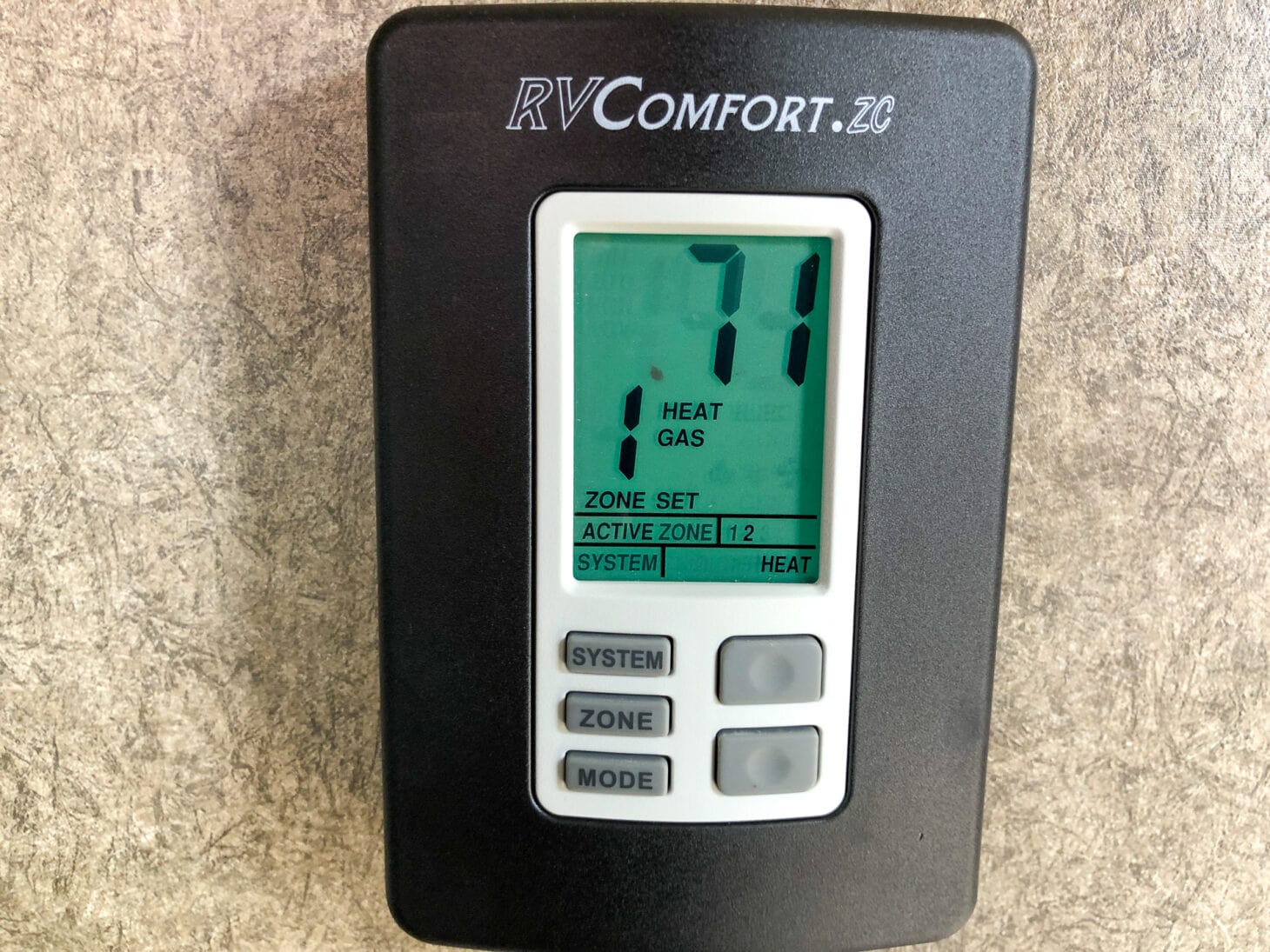
RV Furnace Fan Runs But No Heat: Propane Ignition Problems
Start by checking that the propane tanks (and the LP detector in some furnace types) are turned on and that you have enough propane to provide the high level of British thermal units (BTUs) needed for furnace operation.
If your furnace has tried to ignite three times unsuccessfully, it will give you a fault light and go into appliance lockout. Reset the system by turning off the furnace at the thermostat and turning it on again to allow the ignition process to restart.
Check the exterior exhaust vent to make sure that it isn’t blocked with spider webs or mud dauber nests—a telltale sign of this is soot on the side of the RV exterior. You’ll need an RV technician to remove these obstructions.
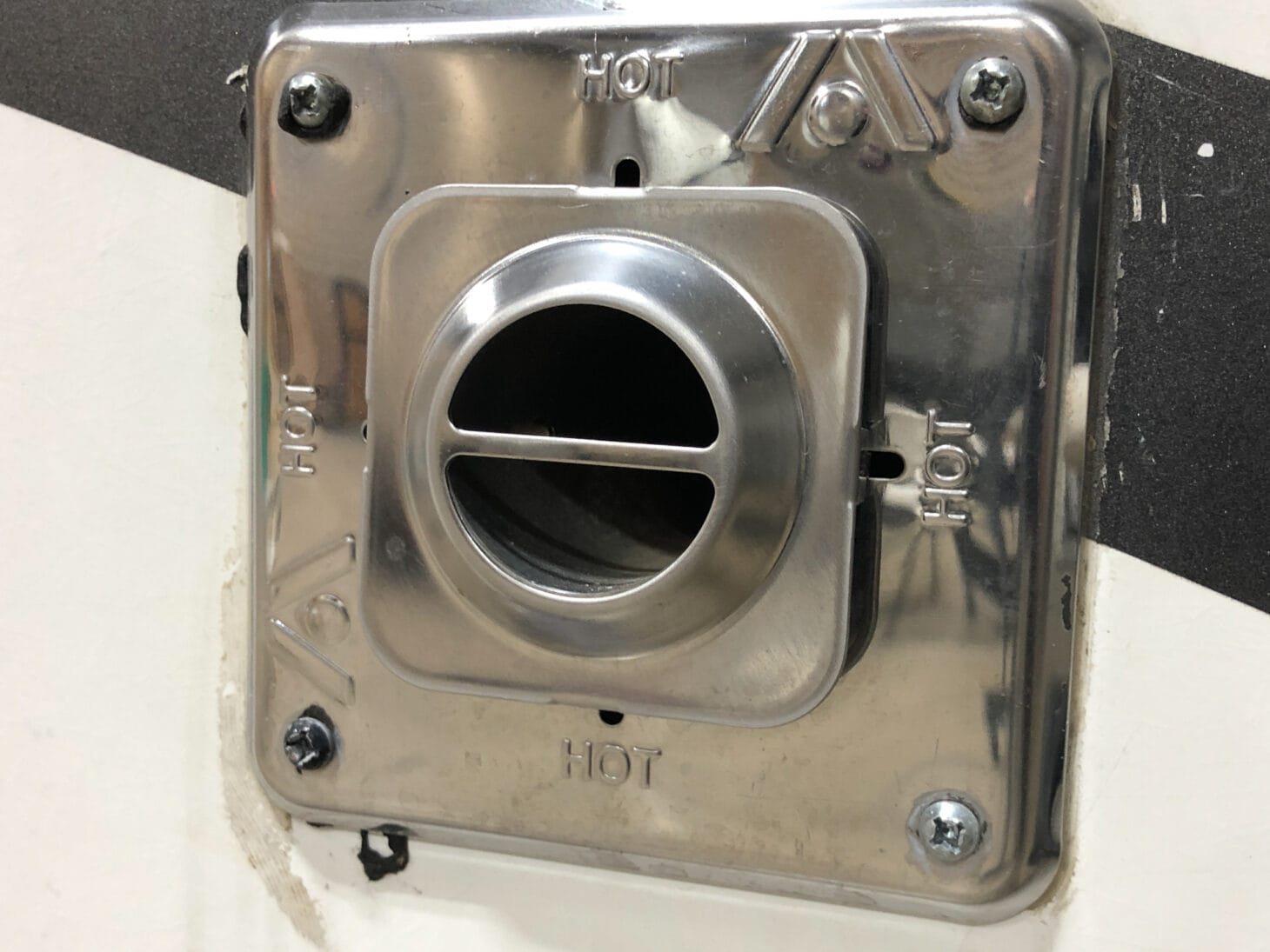
Extremely cold and damp outside temperatures can freeze the regulator. When winter camping, use a tank cover, tank warmers, and/or warming lights to keep the tanks and the regulator warm and protected.
Other problems like the circuit board or dirty ignitor probes can also cause this issue but require an RV technician to check.
RV Furnace Runs Intermittently: Fuel, Switch, and Wiring Issues
This means that there’s a problem with either the sail switch or the high-temperature limit switch. They could be on the verge of going out or have a loose wiring connection. If the battery cable connections are loose, you can easily check and remedy; however, other issues require an RV technician.
This can also happen when the furnace exceeds the LP rate of vaporization when it’s extremely cold, and the LP tank is low on fuel. The furnace will run, but then run short on fuel. If you wait 15 minutes, it could create enough vapor to run again for a little while, but then runs short of fuel again.
Additional RV Heating System Troubleshooting and Safety Tips
- If you utilize both your furnace and a space heater, the thermostat might think that the temperature setting is already satisfied. Move the space heater to another room or turn it off.
- Mud daubers and other insects love to make nests in the furnace exhaust vent that leads into the burn chamber. Some RVers use mud dauber screens to keep them out (there are different sizes for different furnace models). Note that the use of mud dauber screens could void your warranty, so check with your manufacturer before use. This exhaust vent is also very hot when in use—don’t install any screens when your furnace is on.
- Furnace floor registers should be open, uncovered, and free of debris. If blocked, back pressure can be put on the system and possibly cause the burn chamber to overheat.
- If you can access your foil ductwork, check that it’s straight and free of kinks. If it’s expanded over time, trim some of the excess off.
When to Call an RV Furnace Repair Technician
These troubleshooting tips can help you remedy some common RV furnace issues. However, there are going to be problems that require the expertise of an RV technician—like cleaning or replacing your sail switch or high-temperature limit switch, clearing blockages like dauber nests, replacing the circuit board, and cleaning the ignitor probes.
This article has links to products that were carefully selected by our editors. We may earn commission on your purchases from these links. Visit this page for the full details of our affiliate marketing policy.

